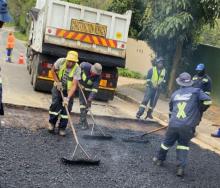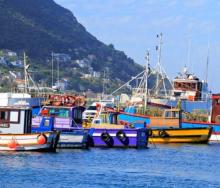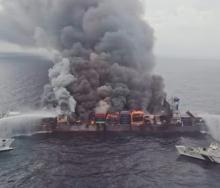Eskom will not be implementing “permanent load-shedding” on stages 2 and 3, the parastatal has confirmed, after some media outlets ran headlines suggesting this scenario following a media briefing at the weekend.
Eskom spokesperson Sikonathi Mantshantsha asked media houses to “please correct” their headlines after journalists extrapolated comment by the power utility’s board chairman, Mpho Makwana, as indicating that there would be “permanent load-shedding” across the country for the next two to three years.
“Eskom has considered implementing permanent stage 2 and 3 load-shedding to give more predictability to the public. As Andrè de Ruyter stated during the session, this is not possible as it would not guarantee that load-shedding would remain at the lower levels,” Mantshantsha said.
“So please do change and correct your headlines that imply there will be permanent stage 2 and 3 load-shedding as that is inaccurate,” he said.
During the media briefing on Sunday, Makwana said that the recovery of generation performance would not happen within a short space of time and suggested the idea of permanent load-shedding as a possible solution.
He said the execution of Eskom’s recovery plan required that power stations be given space and headroom to execute it.
“This requires either adding capacity to create space to do proper maintenance without firefighting, or create some predictability by implementing a permanent stage 2 or 3 for the next two years in order to give sufficient space for maintenance while giving the country a level of predictability or consistency to plan the livelihoods better,” Makwana said.
“Shuttling from one stage to another within a short space of time is not good for the business community,” he added.
Mantshantsha said the teams at the power stations were working hard to improve reliability and availability of units.
“The quick low-hanging fruits are the recovery of the six stations, ie, Kendal, Matla, Majuba , Duvha , Tutuka and Kusile. These stations must be prioritised by deploying the best human resources, allocating sufficient capital, and getting OEM (original equipment manufacturer) support in critical plants,” he said.
“The three units recovery at Kusile, equivalent to 2160 MW, (two stages of load-shedding), must be prioritised and managed as a project which is led by an experienced senior manager who can command authority and be given all resources required to drive the restoration of these units within the shorter time frame,” he said.
The current estimated return to service of Kusile 5 is the first quarter 2024.
He said Eskom was also driving the commissioning of Kusile unit 5, which will add 720 MW by August this year.
“By getting the six stations reliable, and the additional unit at Kusile, (we) will stop load-shedding within the period of 24 months. We also need to protect and guard the best-performing power stations such as Matimba, Medupi, and Lethabo so that they do not deteriorate,” he said.
The board had held more than 50 committee meetings to tackle the crisis over the past 112 days, he added.
“The plant performance recovery plan, which is at the final stages of being approved by the shareholder, will be driven vigorously, and an external project management company will assist the board in stress testing and monitoring the execution of this recovery plan. However, the reality is that the recovery of the Eskom coal fleet will not be achieved within a short term.”
It’s expected to take at least two years to improve the Energy Availability Factor (EAF) from the current 58% to 70%. The journey of the turnaround will see a stretch target EAF being driven toward 60% EAF by March 31, then 65% by March 31, 2024, and 70% by March 31, 2025.
“The key levers to the success of the recovery of the Eskom fleet is the fixing of the systemic issues that are troubling the organisation such as leadership, organisational culture, and poor internal controls required to operate an organisation. These will be embedded as part of the recovery plan,” he said.













